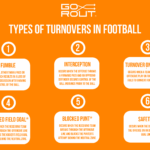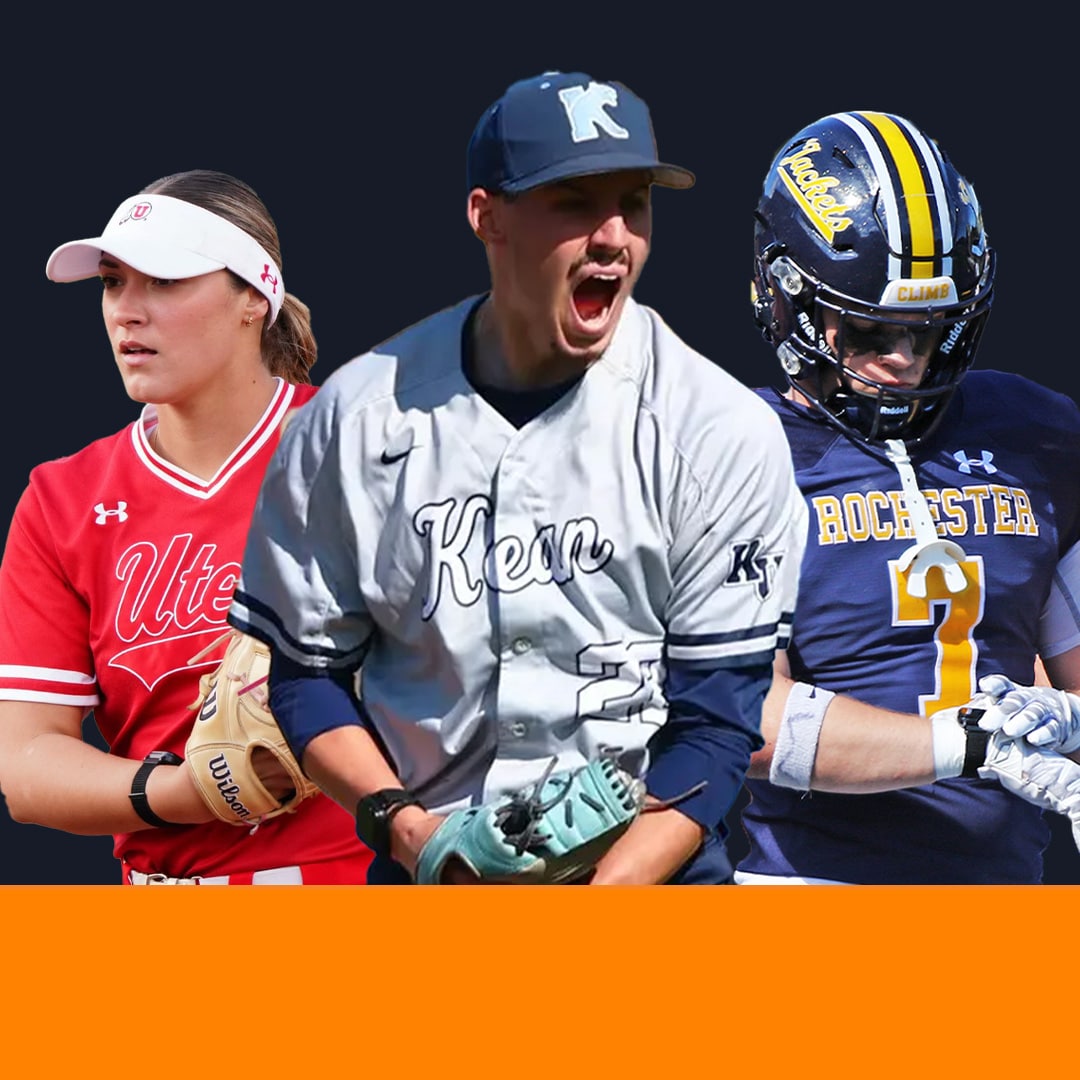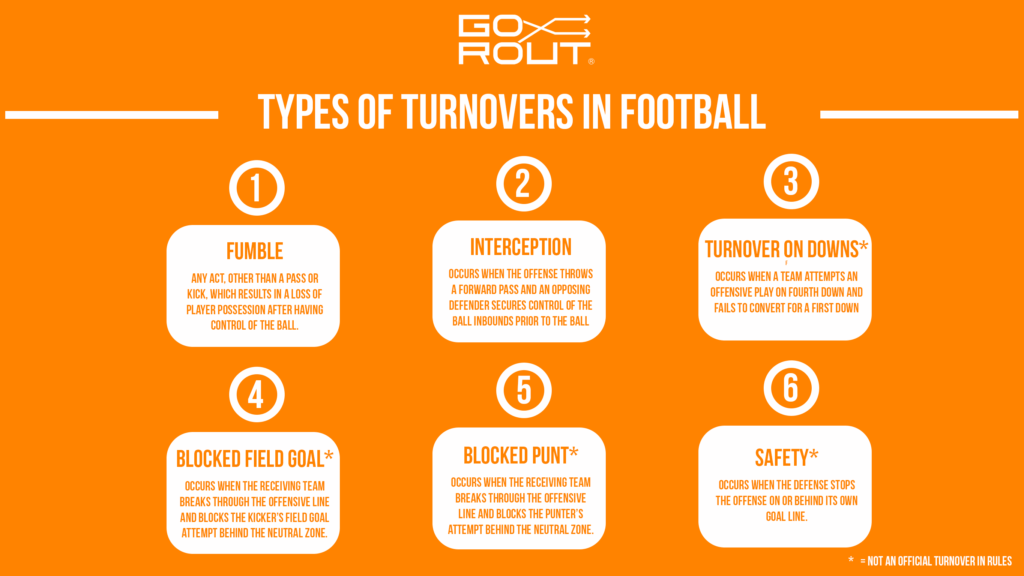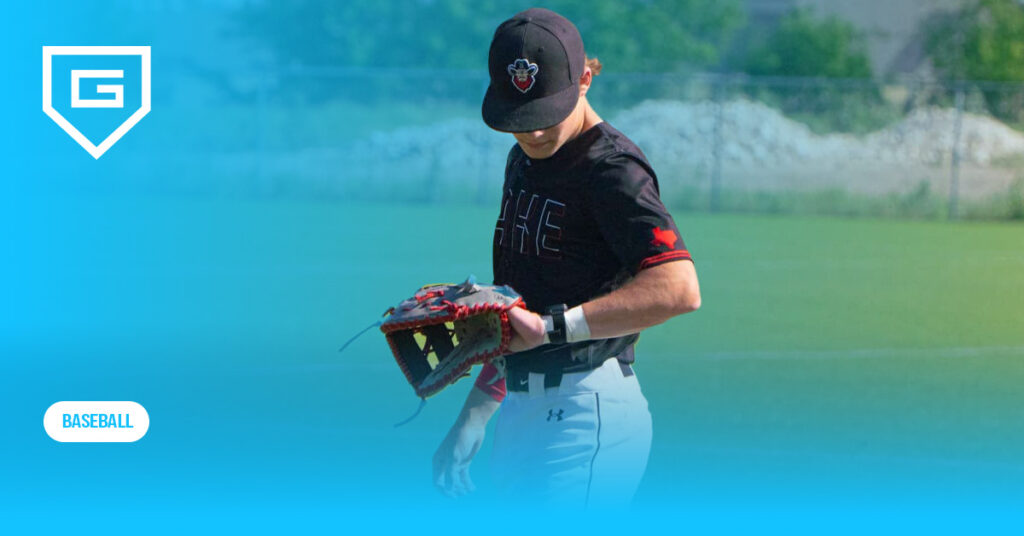How a Coach to Player Communication System Boosts Field Performance
Reading Time: 12 minutes
Reading Time: 12 minutes
A coach-to-player communication system boosts field performance by giving you a faster, clearer, and more reliable way to guide athletes in real time.
Instead of shouting over the noise or relying on hand signals, you can deliver precise instructions instantly. That’s a game-changer for coaches and players alike.
With this system, you can adjust strategy on the fly and improve coordination between teammates. The chance of miscommunication drops, and you get to keep everyone focused under pressure.
Whether you’re calling plays in football, sending signals to a catcher in baseball, adjusting strategy in the middle of a softball game, or just trying to keep players dialed in, the right technology helps you stay in control. It’s all about having a direct line when it matters most.
Let’s break down what these systems are, the benefits they bring, and which features actually matter. You’ll get a look at how solutions like GoRout work in real life, plus some simple ways to set them up for your team.
Key Takeaways
A coach-to-player communication system helps you make better decisions and cut down on mistakes, helping your team work together in real time.
Sports psychology research backs this up. Quick, clear instructions can boost team performance almost immediately.
When players get direct guidance, you see faster adjustments and better coordination. Secure, instant cues beat hand signals and shouting every time.
Key points to remember:
- Quick communication means faster decisions
- Clear instructions lower stress and confusion
- Reliable systems keep execution sharp
- Secure channels protect your team’s strategies
- Consistency in practice and games pays off long-term
If you want a coach-to-player communication system that’s easy, reliable, and secure, GoRout is one of the most trusted options out there that gives you a competitive edge.
You can get a quote and see if it fits your team’s style.
What Is a Coach to Player Communication System?
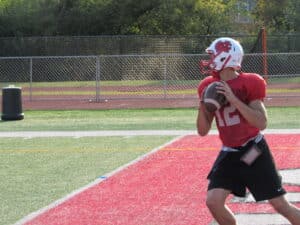
A coach-to-player communication system is an electronic tool that lets coaches talk directly to players on the field in real time. Instead of hand signals or yelling, you send instructions through secure devices players wear during games or practice.
Usually, you get a transmitter for the coach and a receiver for the player. The receiver might be built into a helmet, wristband, or some other wearable. This setup lets you share strategies or quick updates with no confusion.
Unlike old-school methods, these practice systems give you a private, reliable communication channel. Players can focus on execution instead of trying to decode signals.
You can use these systems in football, baseball, and softball. The goal is to make communication clear, making it faster and more secure so your team reacts quickly to whatever’s happening on the field.
Common uses include:
- Sending in plays or formations
- Giving tactical feedback during live action
- Keeping players connected and reducing stress
By combining wireless tech with a simple design, these systems help you guide your team in real time. Communication stays discreet and efficient, which is all you want as a coach.
Key Benefits of a Coach to Player Communication System

You can run practices with more precision when communication is instant and clear. Faster play transitions mean less wasted time and more meaningful reps.
Instructions stay consistent no matter where players are.
- Faster setup between drills
- More reps in the same time
- Fewer errors from misread signals
- Clear direction for every position
Improved game day performance
On game day, speed is everything. A reliable system lets you call plays fast and adjust to opponents on the spot.
You can expand your playbook since players get instructions directly and privately. That opens the door for more complex strategies and one-on-one guidance.
- Quicker adjustments to opponent tactics
- Faster play calling under pressure
- More tactical variety available
- Targeted instructions for key players
Improved player development
Clear communication helps players learn faster. New athletes pick things up quicker with direct feedback instead of guessing signals.
This system also cuts hesitation that results in a winning edge. Players react with confidence and build stronger decision-making skills over time. For many teams, using wearable technology in sports makes this process even smoother.
- Shorter learning curve for new players
- Better execution during high-pressure moments
- Stronger decision-making skills
- More active participation in practice
Key Features of a Coach to Player Communication System

When you’re picking a coach-to-player communication system, you need tools that send clear instructions right away. Depending on the provider, a solid setup usually includes headset systems, web and mobile apps, player receivers, or belt packs.
The tech should give you reliable coverage across the whole field. That way, your players never miss a call even in loud or fast-moving situations.
Here’s a quick table of the features that really matter.
| Feature | Why It Matters |
| Extensive field coverage | Keeps communication consistent across different venues and playing surfaces. |
| Real-time clarity | Delivers instant, clear messages so players react without hesitation. |
| Secure connectivity | Protects your signals from interference or outside access. |
| Strong battery life | Ensures devices last through practices and full games without frequent charging. |
| Durability | Withstands heat, rain, and impacts common in sports. |
| Ease of use | Lets you and your players focus on the game, not the setup. |
Look for a system that adapts to different sports. Advanced ones like GoRout let you send visual cues or tactical updates through coaching apps and digital wristbands, making them more flexible in the real world.
Simple controls and a fast setup are just as important as the fancy features. If your players can’t use the device quickly, it’s basically useless when the pressure is on.
“GoRout has been a huge addition to our program! We no longer worry about missing signs, whether it be on defense or offense, and we don’t need to spend any time teaching signs! GoRout’s technology, functionality, and app has been easy to use and consistently accurate. I’d highly recommend GoRout to any program!” Coach Kevin Leighton, Fordham University Baseball (2025)
How to Select the Right Coach to Player Communication System

Start by matching the technology to your team’s daily needs. A system that works in a small gym might not cut it in a big stadium. Think about where you’ll use it most before buying.
Battery life matters. If you run long practices or games, a short-lasting device will drive you nuts. Go for systems that last 5–8 hours without needing a charge.
Durability is key, too. Outdoor sports mean rain, heat, and rough contact. A rugged, weather-resistant design saves you from constant repairs. If you coach baseball or softball, check out this pitch-calling device that’s built for noisy fields.
Price is always a factor, but don’t trade reliability for a lower cost. Compare features side by side to see what’s essential and what’s just nice to have.
Weigh these factors and you’ll land on a system that keeps decisions quick, errors low, and players locked in.
Meet GoRout: A Leading Coach to Player Communication System
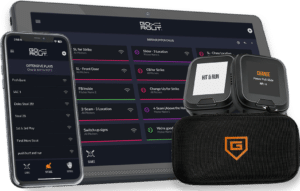
GoRout lets you send plays, cues, and adjustments to your players without hand signals or paper cards. The system uses secure, wireless devices that work in real time, so your team stays on the same page during practice and games.
You can use GoRout across multiple sports. Football teams use it to speed up reps and make play calling simpler. Baseball and softball programs count on it for fast, accurate pitch calls and defensive shifts, which cuts down sign stealing.
Key benefits you’ll notice:
- Instant play delivery
- Encrypted communication
- Durable, all-weather devices
- Easy setup without Wi-Fi
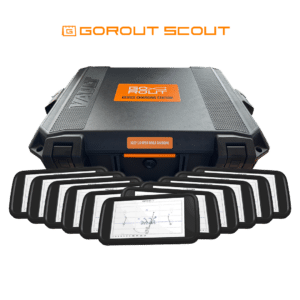
GoRout offers specialized systems for different sports. In football, the Scout and Gridiron platforms help you run more efficient practices and send plays directly to players during games.
For baseball and softball, the GoRout Diamond system provides a secure electronic pitch-calling system so pitchers and catchers get clear calls without confusion. That keeps the game moving and stops opponents from gaining an edge.
Thousands of teams, from high schools to colleges, already use GoRout. Coaches mention faster communication, more practice reps, and fewer mistakes on the field.
Check out the testimonials and case studies to learn more.
With fewer barriers between you and your players, it’s easier to focus on strategy and execution.
Visit the webshop to check out packages or get a quote that fits your team.
“GoRout has been a game-changer for our football program over that last two years. It has drastically improved our practice efficiency in all three phases of the game. We have been able to get almost double the amount of practice reps since converting to their system over using the traditional handheld card system. Due to GoRout, we have eliminated a lot of wasted time in practice and focused much more on the development of our players and their game readiness each week. I highly recommend their system to any program looking to maximize their practice time and to improve overall performance.” – Coach Brian Wright, Northern Arizona University Football (2025)
How to Implement a Coach to Player Communication System
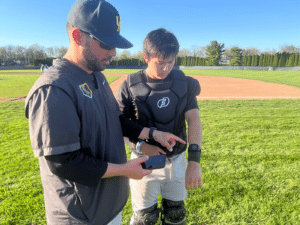
Start with a clear setup plan. Assign staff roles: one person handles storage, another checks batteries, and someone else manages sideline distribution. This keeps things organized and avoids confusion.
- Unbox and check every component before the first use.
- Make sure each headset, receiver, or wearable is there. Keep a simple inventory sheet so you can spot missing or damaged items fast.
- Charge every device before practice. If a system isn’t fully charged, it might cut out in the middle of drills.
- Charging should become a daily habit. That way, players never start with low power.
- Test the system on the sideline before letting players use it. Check if audio or visual signals are clear and see how far the coverage reaches.
- Train coaches on the basics. They should know how to send quick instructions, adjust volume, and reset devices.
- Set up simple communication protocols so everyone uses the same signals or commands. Introduce the system during practice drills.
For baseball or softball, try it out with pitcher and catcher communication to make pitch calls easier. Use the football play-calling system to run scripted plays more smoothly.
Show players how to wear and use the devices. Run fast response drills so they get used to reacting right away.
This helps them get comfortable and cuts down on hesitation. Once everyone’s ready, launch live practice sessions and start gathering feedback.
Ask coaches and players what worked and what didn’t. Tweak the system now, so game days run smoother later.
“It really helped our players communicate 1st and 3rd situations, scouting reports, bunt defenses, steel coverages, spray charts and all the things necessary to keep the flow of the game going. It’s been a tremendous resource for us, not only to be on the same page with our athletes, but also to speed up the game.” – Coach Tim Walton, University of Florida Softball (2024)
How to Optimize Communication During Games and Practices
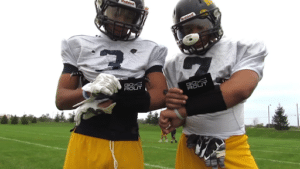
Keep messages short and direct during games. Players respond faster when you skip long explanations and stick to the next action.
Clear, specific cues help everyone stay on track. Sometimes, saying less is actually more.
Knowing when to talk and when to let the play unfold makes a difference. Too much chatter can overwhelm athletes, but a timely reminder—like a formation shift—can boost confidence without slowing things down.
Key strategies for clarity
- Use simple terms players already know
- Deliver one instruction at a time
- Match tone with urgency
- Repeat only if you need to confirm understanding
With a good system, you can adjust decisions in real time. See a defensive gap? Use GoRout to send a quick message and change the play instead of waiting for a timeout. It keeps momentum on your side.
In baseball or softball, fast signals matter even more. Solid coach-to-catcher communication keeps pitchers and catchers on the same page, especially under pressure.
It’s true across all sports. When players trust that directions are clear and quick, they execute better.
During practice, use the system to reinforce habits. Instead of stopping drills, send reminders about spacing, timing, or positioning.
It keeps athletes moving and still getting feedback. It’s a smoother way to build habits that translate into real games.
How to Calculate Return on Investment
To measure ROI for a coach-to-player communication system, combine performance data, financial costs, and long-term player growth. There’s no perfect formula, but mixing numbers with observations gives you a decent idea of value.
Start with quantitative tracking. Compare win-loss records, team stats, and player performance before and after using the system.
You’ll see higher completion rates, fewer errors, or more efficient plays. In baseball, a pitch calling watch can show changes in accuracy and speed.
Now, look at the financial side. Here’s a simple table to weigh investment against results:
| Factor | Costs | Benefits |
| Initial purchase | Hardware, setup | Faster play calls |
| Ongoing expenses | Maintenance, subscriptions | Better team coordination |
| Intangible gains | Time saved, reduced stress | Higher confidence, stronger trust |
Some benefits won’t show up in stats or budgets. Players might adapt faster, make smarter decisions, or build stronger communication habits.
Those skills pay off over seasons, not just in one game. Mix the short-term numbers with long-term growth, and you’ll get a better sense of whether the system’s worth it for your team.
How to Overcome Common Challenges
Communication systems can boost performance, but some of them come with specific issues. Tackle these early, and your team will stay confident and your gear dependable.
Battery life can be a pain during long practices. Always charge up before sessions and keep spare power banks handy. If your system lasts 5–8 hours, that’s usually fine, but backups save the day when things run long.
Weather conditions like rain or heat can mess with signals and durability. Pick a gear built for the outdoors and test it in different conditions. That way, you won’t get caught off guard on game day.
Some players can get too dependent on constant feedback. Mix live instructions with moments where they have to make quick decisions on their own.
It keeps them adaptable when things get hectic. You might also run into resistance from staff who prefer old-school signals or calls. Show them how digital tools cut down on errors and speed up adjustments.
Sometimes, seeing a catcher’s communication device in action helps change minds.
Don’t forget equipment management. Assign someone to handle charging, storage, and updates. Even a simple checklist helps you avoid lost gear or dead batteries.
Conclusion About Coach to Player Communication System
A coach-to-player communication system gives you faster, clearer and more reliable ways to guide your athletes during practices and games.
Instead of using hand signals or shouting, you can deliver instructions directly, reducing confusion and increasing player confidence.
It also improves team cohesion by keeping every player on the same page. When you send a message, it goes to the right person instantly, so you can adjust strategies and respond to changing situations on the field.
You’ll get:
- Faster decisions when the game is on
- Less miscommunication in high-pressure moments
- Better execution of plays and tactics
- Improved player focus through direct feedback
Studies in sports psychology show that clear and timely communication improves performance and reduces stress. And with a secure system, you also protect your team’s strategy and data from being intercepted.
If you want a durable, secure and easy-to-use solution, GoRout is the way to go. It works in any weather, requires no Wi-Fi, and comes with strong warranty support.
Get a quote or visit the online shop today.
FAQs About Coach to Player Communication System
How do coaches communicate with players?
You can talk to players using signals, voice commands, or digital devices. Hand gestures still work, but now you’ve got encrypted headsets, tablets, or wearables to deliver instructions without all the noise or confusion.
How do you connect with players as a coach?
You build that connection by giving clear feedback, listening to concerns, and using reliable communication tools. When you mix personal trust with solid systems, players know what you expect and feel your support. That combo strengthens relationships and performance.
Can coaches talk to players through helmets?
Yes, especially in sports like football. Helmets often have built-in receivers, so you can send plays or corrections right to a player’s earpiece. The NFL lets one offensive and one defensive player get live messages through helmet systems.
Who are NFL coaches talking to on headsets?
On the sidelines, NFL coaches chat with coordinators, assistants, and sometimes spotters in the booth. When a coach talks to a player, it usually goes to the designated helmet receiver (typically the quarterback or defensive captain).
How can improved coach-to-player communication influence team strategy and performance?
When you share info quickly, your team can adjust, react to opponents, and stay in sync. That cuts wasted time and helps you run strategies more efficiently. Studies in football show that timely communication leads to better results.
In what specific ways does clear communication change in-game decision making?
Clear instructions let players act without second-guessing. Instead of guessing signals, they get direct cues guiding their choices. That precision helps you keep up with momentum shifts or counter an opponent’s moves on the fly.
How does clear communication streamline decision-making during high-pressure moments?
When things get tense, every second counts. A solid system lets you shoot off quick, clear messages that help cut through the chaos. That way, players can focus on what they need to do instead of figuring out what you meant.
In what ways does transparent communication reduce mistakes and misinterpretations?
When you use direct systems, players don’t have to rely on hand signs or shouts that get swallowed up by the crowd.
Each message comes through in a clear, straightforward way. That means fewer errors and less confusion about who should be where.
Everyone can actually understand their role, so formations stay together.

